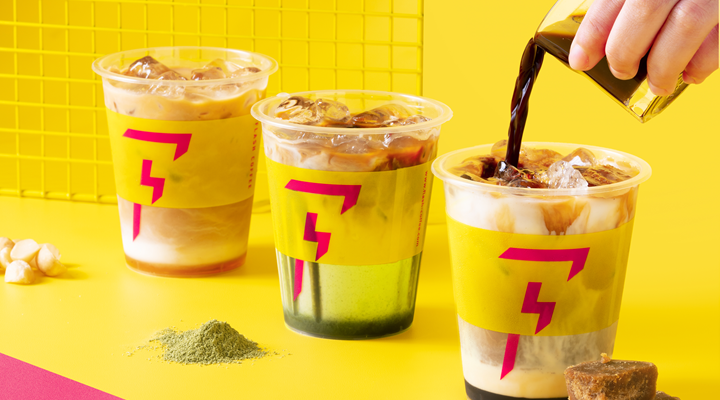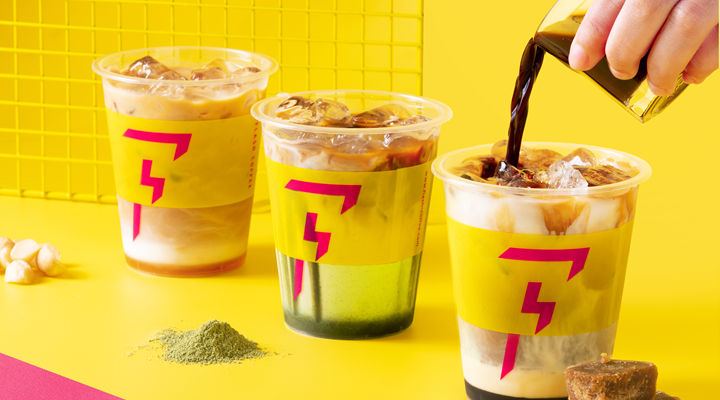
Singapore can be a perfect destination for coffeehouse chains to boost their brand awareness and accelerate expansion, but success is not always guaranteed in this highly competitive market.
In recent months, the city-state has seen the entries of several well-known chains, including Tim Hortons from Canada, Kenangan Coffee and Fore Coffee from Indonesia, Luckin Coffee from China, and Louisa Coffee from Taiwan.
Thanks to the diverse cultural background, Singapore is described as a favourable market for these brands’ global expansion. The country was Luckin Coffee’s first market outside China and it has since grown to 30 stores in the city state. Kenangan Coffee has opened four, Tim Hortons two, and Fore Coffee and Louisa Coffee one each.
According to GlobalData, Singapore is a major coffee trading hub for the Southeast Asian region and home to a distinct coffee culture.
With the remaining Covid-19 trading and movement restrictions repealed by early last year, the country is seeing a strong comeback in on-premise coffee sales. The market is expected to rise by a consistent 3.2 per cent value compound annual growth rate (CAGR) between 2022 and 2027, according to GlobalData.
“There’s no better country than Singapore to jumpstart our global expansion plan,” Edward Tirtanata, co founder and CEO of Kopi Kenangan, told CNBC. “Why? Because Singapore is a definite hub of Southeast Asia. [People] all over Southeast Asia fly to Singapore, to transit, to travel or do business.”
Several other factors that make the market attractive include a favourable business tax policy, few trade barriers, and a large consumer base comprising local coffee drinkers and international travellers – which can help accelerate brand awareness and network growth.
“An ‘always-on’ culture paired with high disposable incomes means coffee is a cherished staple of Singaporeans’ daily life, partly fuelling the market’s growth over recent years,” said Mario Braz de Matos, co-founder and managing partner of Flying Fish Lab, a Singapore-based company that supports brand and business growth.
However, the more benefits the market offers, the more competitive it becomes, and it is inevitable for brands to face challenges in the long run. What is true today may no longer be relevant tomorrow, added Braz de Matos.
“Winning short-term clients is one thing because Singaporeans are quite susceptible to incentives, but securing long-term loyalty is a completely different and much more difficult task.”
All things considered, he concluded, Singapore’s coffee market can be “exceptionally tough” to succeed in.
“Despite consumers’ financial capabilities, the market faces steep hurdles: sky-high rentals; challenging labour recruitment and retention; and a consumer base quickly jumping on the latest trend and easily moving on once a brand loses its ‘flavour of the week’ mark, and popularity on social media platforms like Instagram.”
The frequent turnover of physical shops over the years also indicates a substantial failure rate, Braz de Matos added.
The collapse of Flash Coffee and Spinelli last year shocked the market.
Flash Coffee announced its closure in Singapore in October, and a month later, San Francisco-based coffee brand Spinelli shut down its operations after nearly 28 years there.
“Flash Coffee’s downfall was a case of overambition. Its rapid expansion outpaced the sustainable growth of the business,” said Braz de Matos. “The result is no different in the coffee chain business than in any other business: you go bust.”
Spinelli, on the other hand, had been losing money for the past five years as a franchise of YTC firm, with total liabilities reaching US$11.2 million. “It appears to have been a portfolio decision, with YTC Corporation choosing to allocate resources to more profitable [markets].”
Put more simply, Flash Coffee struggled due to its excessive expansion, while Spinelli struggled to match the evolution of the modern coffee era.
A hard-to-please market for all
Singapore is not inherently more suitable for big or small players, according to Braz de Matos – it is a very difficult market for all.
It can be tricky to identify any front-runners in the market, but in terms of scale, it is safe to say that Starbucks is the largest chain of coffee shops in the country.
In a risk-averse world, major chains emerge as the winners thanks to high brand awareness, widespread availability, and low risk – the menu is well-known while the product is reasonably consistent, according to Braz de Matos.
To avoid going down the path of previous failed chains, there are many factors that brands should take into consideration.
“It’s important to have a clear, strong and compelling proposition to sustain a business in this market,” he said.
“Regardless of size, businesses are at risk of failure if they don’t carve out their niche, instead falling into basic management mistakes, as seen with Flash Coffee.”
He says novelty is always a significant factor in a market that craves it so intensely, so an initial positive response should not be mistaken for a definitive consumer verdict on future survival or success.
In the case of some Indonesian brands – including Kenangan Coffee and v Coffee – the reasons behind their initial success will be varied. “Indonesia does produce good coffee so it starts with a quality product, as well as offering a sense of identity (in this case, an Indonesian cultural influence) that appeals to consumers, contrasting with the more generic, mass-market American chains.”
To endure in the long term, he said brands should focus on delivering strong concepts, competitive prices, and a product offering that continuously evolves to ensure lasting customer loyalty.
“You might have a coffee that you think is good, but 80 per cent of consumers won’t be able to distinguish it in a blind test, so it becomes a case of ‘perception is reality’.”
With a ‘kopi’ culture dating back to the 19th century and exponential growth prospects, the Singaporean market still offers an opportunity not to be missed for many chains, both local and foreign, a test bed for all forms of coffee.
Braz de Matos will not be surprised if newcomers enter the market this year. But if they want to succeed both short and long-term, they will need to prepare some “‘brilliant basics” and offer a “compelling point of difference”, he said.
These include product mix, customer experience, social media support, adequate pricing, and a location with the right footfall or catchment area.
“Building brands’ compelling difference requires a deep understanding of customers and a clear vision of what they can do, or wish to do, significantly better than competitors. It’s about offering something compelling and unique in the context of the coffee chains’ sea of sameness,” he concluded.
This story first appeared in the February 2024 issue of Inside Retail Asia magazine.
The post A tough brew: What it takes to succeed in Singapore’s crowded coffee market appeared first on Inside Retail Asia.


